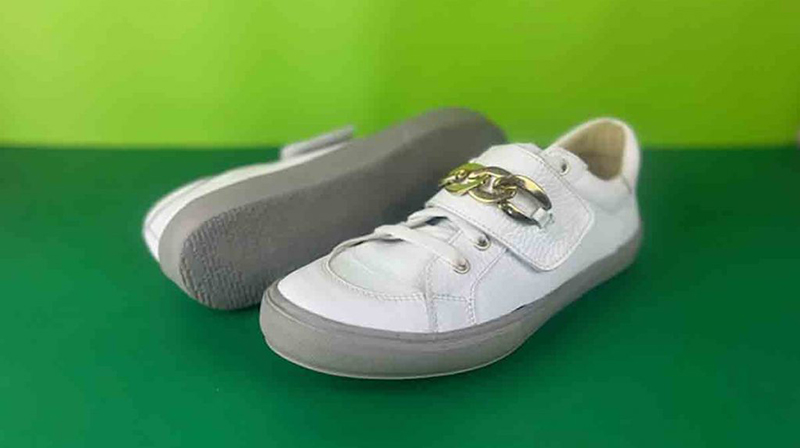Composed of recycled rubber, EVA and copper microparticles, it was successfully tested against bacteria such as Escherichia coli and Staphylococcus aureus, demonstrating its capacity to reduce the presence of pathogens.
Professionals from the Technological Development Unit (UDT) of the Universidad de Concepción, together with the firm Indeplast, are developing an innovative material composed of recycled rubber, EVA and copper microparticles, which is not only sustainable, but also has proven antimicrobial properties against bacteria such as Escherichia coli and Staphylococcus aureus. This advance seeks to revolutionize the manufacture of footwear, contributing to hygiene and preventing the transport of pathogens on surfaces in daily contact.
The project, awarded in July 2022 and supported by Corfo, is motivated by the lessons learned from the pandemic, said the engineer in charge, Carolina Olivari Melo, who recalled the times when we had to sanitize our shoes in footbaths before going anywhere.
“We saw that shoes carried a lot of bacteria when walking on the streets. When you walk and walk through the streets, you acquire hundreds of bacteria on the soles that we then take home; it would be ideal to take off your shoes before going inside, but with these soles we have corroborated our hypothesis that bacteria are inhibited by having copper nanomicroparticles incorporated in their matrix,” he said.
In addition to Olivari, the team is made up of Dr. Patricia Castaño, Dr. Cristian Miranda and Ramón Tobosque.
Findings
The challenge of the project was to develop eco-soles with antimicrobial properties from rubber waste and copper microparticles that would reduce cross-contamination of pathogens carried in shoes. To achieve this, the researchers mixed recycled tire rubber particles with copper microparticles, known for their ability to repel bacteria.
“We subjected the samples to certain types of bacteria, which are the most commonly detected and are measured in laboratories at the University of Concepción. This determines the homogeneous distribution of the copper microparticles in the soles and we were able to visualize that they effectively inhibit the bacteria that are inside the material,” he explained.
Regarding the subsequent application of these soles, Olivari said that they are in permanent coordination with the company to define details that will make the commercialization of the product viable. It was along this path that they went from black soles to beige ones that favor the contrast of the copper particles.
“We are always working in close coordination with the company from the laboratory stage when we are developing and finding results. For example, color was a very relevant issue in this development because copper and rubber already have colors that are characteristic of the material. The challenge was to achieve colors that were more commercially attractive,” he said.
He added that “we have had feedback from national footwear manufacturers and they are interested in the rubber particles being visible, so we are now arriving at a slightly more beige color, tending towards brown, which is what we have had as a market requirement”.
With regard to what is to come, Olivari detailed that “we are in the final stage of the project, analyzing the soles in real conditions of use; that is, with shoes manufactured and used for walking and evaluating the results obtained. We are also disseminating information through the company’s social networks and are visiting customers to show these results. We are already in the last batch, making meetings with interested companies, and finishing the evaluation, although we did all this in the early stages of the development of the materiality.”
Source: UdeC News

